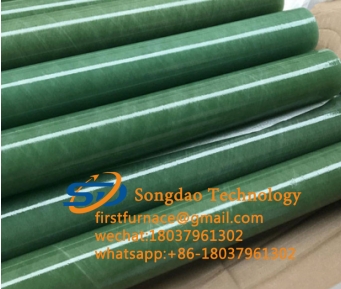- 06
- Jan
What are the main indicators that affect the performance of epoxy glass fiber pipes
What are the main indicators that affect the performance of epoxy glass fiber pipes?
1. Insulation resistance and resistivity
Resistance is the reciprocal of conductance, and resistivity is the resistance per unit volume. The smaller the conductivity of the material, the greater its resistance. The two are in a reciprocal relationship. For insulating materials, it is always desirable to have the highest resistivity as possible.
2. Relative permittivity and dielectric loss tangent
Insulation materials have two uses: the insulation of the various components of the electric network and the medium of the capacitor (energy storage). The former requires a small relative permittivity, the latter requires a large relative permittivity, and both require a small dielectric loss tangent, especially for insulation materials used under high frequency and high voltage, in order to make the dielectric loss small, both require selection Insulation materials with small dielectric loss tangent.
3. Breakdown voltage and electric strength
Under a certain strong electric field, the insulation material is damaged, and the insulation function is lost and it becomes a conductive state, which is called breakdown. The voltage at breakdown is called breakdown voltage (dielectric strength). Electric strength is the quotient of the voltage when a breakdown occurs under regular conditions and the interval between the two electrodes that receive the applied voltage, that is, the breakdown voltage per unit thickness. For insulation materials, generally the higher the breakdown voltage and electrical strength, the better.
4. Tensile strength
is the maximum tensile stress that the sample receives in the tensile test. It is the most widely used and most representative experiment for the mechanical function experiment of insulation materials.
5. Burn resistance
refers to the ability of insulation materials to resist burning when touching the flame or to prevent continued burning when leaving the flame. With the increasing use of insulation materials, the requirements for its incineration resistance become more important. People have used various methods to improve and enhance the incineration resistance of insulation materials. The higher the incineration resistance, the better the safety.
6. Arc resistance
The ability of the insulation material to withstand the arc action along its surface under regular experimental conditions. In the experiment, the AC high voltage and small current are selected, and the arc resistance of the insulation material is judged by the time required for the appearance of the insulating material to form a conductive layer by the arc effect of the high voltage between the two electrodes. The larger the time value, the better the arc resistance.
7. Sealing degree
The sealing barrier against oil and water quality is better.

